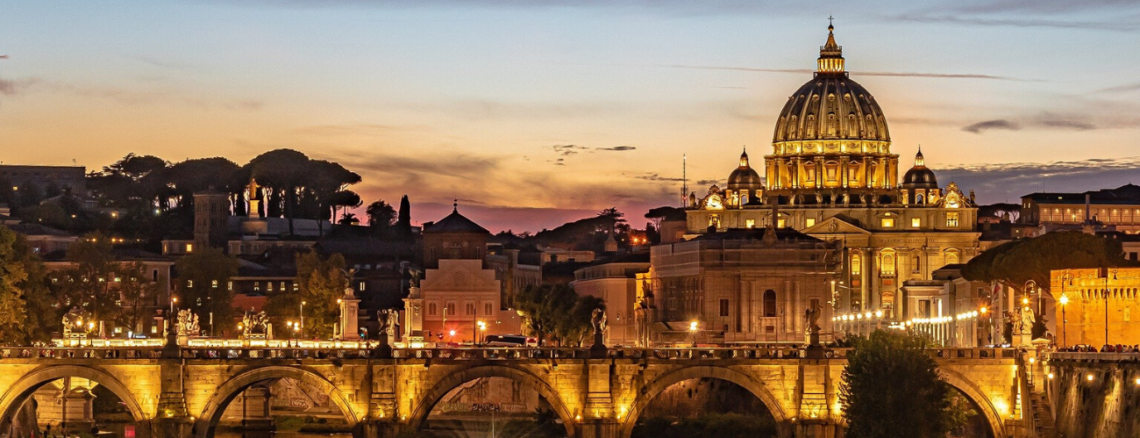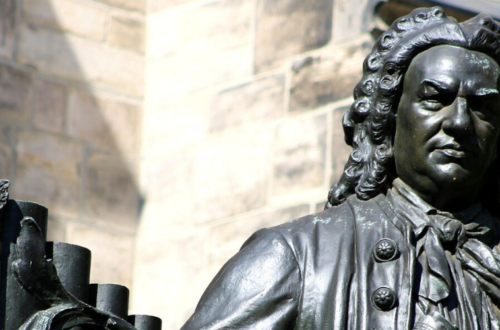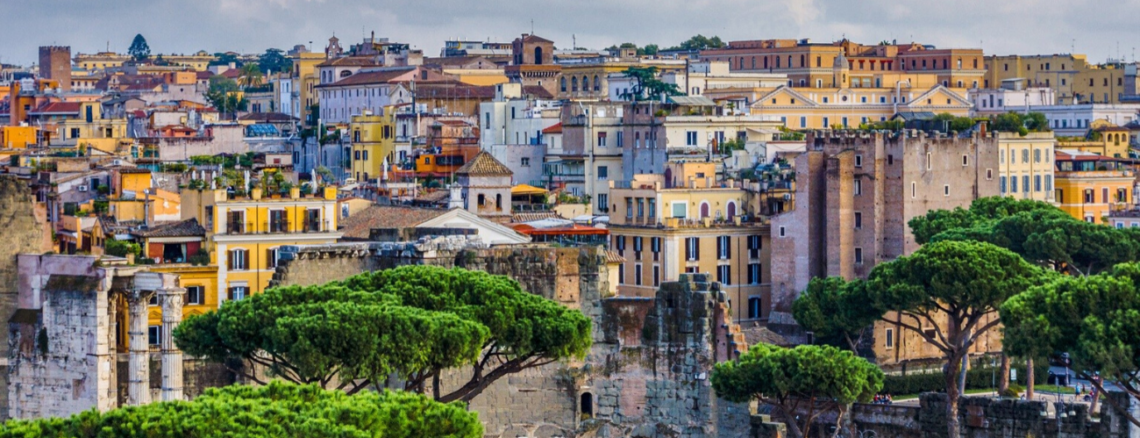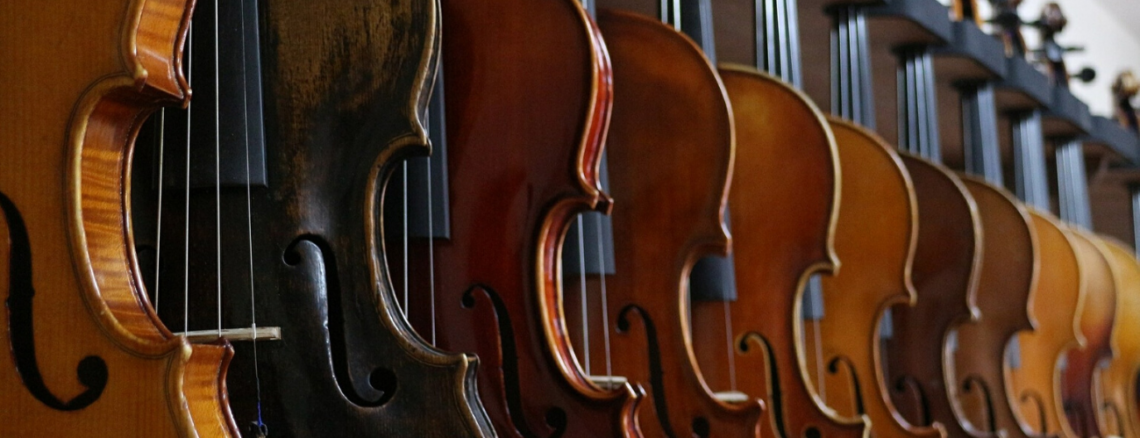-
Performing with Palestrina, or Classical Music for Babies and Toddlers

Today my son, Little M, and I want to take you back a little bit before the Baroque period to explore some music from the Renaissance!
Little M is currently a one-year-old, so he’s a baby that’s just about to become a fast and furious toddler! Even though he’s all over the place and into everything right now, he’ll still slow down to listen to this music. He loves watching singers, especially, and he literally crawl-runs over to the computer when he hears the beginning of a piece of classical music!
The Renaissance period of classical music lasted from approximately 1400–1600. It came right before the Baroque period, which was roughly from 1600–1750.
I always say that the Baroque period–and other historical periods–are “roughly” or “approximately” from blah to blah because there was always stylistic overlap between eras. The world didn’t just wake up on January 1st of the year 1600 and find themselves in the Baroque period, for example! It was a much more gradual shift.
Also, if you want to learn more about Baroque music, check out our post called “What is Baroque Music?”.
A cappella vocal music–which is music for singers without any instruments–reached its peak during the Renaissance. The composer of today’s selection, Giovanni Pierluigi da Palestrina (c1526–1594), was one the very best composers in this genre. His music is looked at today as sort of the “gold standard” of what’s called Renaissance polyphony, which is vocal music for many voices singing together (“poly” means “many” in Latin).
Before we get to the music, here’s a short bio on Palestrina to get you up to speed.
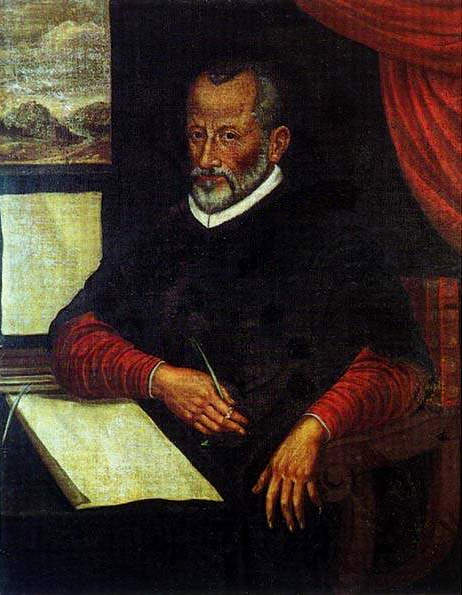
Palestrina’s Bio
Giovanni Pierluigi da Palestrina (c1526–1594) was probably born in Palestrina, Italy, but we’re not sure exactly when. The “da Palestrina” part of his name literally translates to “from Palestrina.”
The town of Palestrina is near Rome, so it is no surprise that Palestrina the musician and composer ended up in Rome by his teenage years. He went back to the town of Palestrina for a while, but spent most of his life living and working in Rome.
Palestrina worked for a while as an organist in his hometown. But then his position was majorly upgraded and he starting working for Pope Julius III in St. Peter’s Basilica in Rome. He worked as the musical director at various other churches in Rome, and these positions included composing a lot of vocal music.
Near the end of his life he finally had enough money to focus even more on composing music. He continuing working at churches in Rome, however, until his death in 1594. He is buried in St. Peter’s Basilica, though it’s unclear now exactly where. (St. Peter’s is gigantic–it is literally the largest church in the world!)

The Music
Palestrina’s “Quando dal terzo cielo” for six voices is the music Little M and I want to share with you today.
In the video, all six parts are sung by men, which is how it would have been performed originally. Polyphonic vocal music (What’s that? See above.) of the Renaissance usually didn’t include women singers because much of the music was intended for the church (although this piece was not) and women weren’t allowed to sing in church at that time.
Instead, some of the men would sing in the high, female vocal range. Today we call these men countertenors, and you’ll hear and see two of them in this piece. The other four singers are tenors, baritones, and basses, which sing in the ranges we more commonly associate with the male voice.
The title of this piece–“Quando dal terzo cielo”–means “When from the third heaven” it Italian, and it is about the myological diety Dori. The song praises Dori’s great beauty and delightful attitude.
Despite only talking about Dori, the song was actually a way to flatter the wife of the man who paid to have the piece written. It would have been considered rude to name the man’s wife directly, so this was one way to get around that!
We hope you enjoy the music! Let us know what you think by leaving us a comment below!
This performance is by the King’s Singers. Check them out on their website or their YouTube channel!
If you want to check out the whole CD, you can find it on Amazon by clicking the image below. (Disclaimer: We may receive compensation [at no extra cost to you!] when you click on the links to this CD.)
-
Reveling in Rossi, or Classical Music Songs for Kids

My one-year-old, Little M, loves vocal music! He is always very interested in watching videos of people singing.
Songs–even classical music songs–are great for kids because they introduce new words and sounds while reinforcing familiar ones. Songs in other languages, such as our selection for today (which is in Italian), are also great. They introduce the words and sounds of other languages and help babies and kids learn more about the world around them.
Today’s selection is by the classical music composer Luigi Rossi (1597?–1653). You probably don’t know who Rossi is since he’s no longer that famous, but he was a big deal in his day. He wrote two Baroque operas and a ton of other great vocal music to prove it!
One of Rossi’s operas, Orfeo, was based on the ancient Greek myth of Orpheus and Eurydice. It was premiered in Paris in 1647 and became an important turning point in the French acceptance of Italian music!
To get you up to speed on Rossi before we dive into his music, here’s a short bio.

Orphée ramenant Eurydice des enfers (1861) by Jean-Baptiste Camille Corot Luigi Rossi’s Bio
Born near the end of the 16th century, Luigi Rossi was an Italian Baroque composer who loved to write music for singers. Almost all his works include voices and it is for these pieces that he is remembered today.
He lived in Rome by the 1620s and worked for various wealthy patrons there before landing a position as a church organist. His music became popular in France in the 1640s and he was invited to write an opera, Orfeo, to be premiered in Paris. After a few more trips to Paris, he returned to Rome for good, by that time lauded as one of the very best composers in Italy.
After his death in 1653 he was remembered as an amazing composer and virtuoso for a least another half-century before falling into obscurity. His music was “rediscovered” (thankfully!) in the 20th century.

The Music
My one-year-old son, Little M, helps me pick out music for this blog–only pieces he’s interested in get posted! And so the selection he and I would like to share with you today is Luigi Rossi’s “Dopo lungo penare.”
This is a canzonetta–or a short, lighthearted vocal piece (i.e. song)–in which the singer is having an argument with “Love.” Their argument is about whether or not he will again fall into the clutches and torments of love, or if he’ll escape and be happy. (This is admittedly a rather dark take on love by someone who had unfortunately been hurt before.)
The singer here is a fabulous countertenor. A countertenor is a male singer who sings in the high vocal range normally associated with female singers.
It’s a very playful piece that makes you want to move around to the music!
If you want to know more about any of the instruments you see, check out our Guide to Baroque Instruments. The instruments in this video are called “period instruments” because they were made at the same time period (i.e. hundreds of years ago!) as the music being played, or they are exact copies of instruments from that time period.
Little M and I hope you enjoy this song! Let us know what you think by leaving a comment below!
This performance is by countertenor Jakub Józef Orliński and the ensemble L’Arpeggiata. Go check them out!
-
5 Reasons Why Your Children Should Listen to Classical Music

While experts are divided on whether or not listening to classical music actually makes babies and children smarter, here are five reasons why your kids (and you) should be listening to it anyway.
1. It’s exciting!
Articles about the childhood benefits of classical music often emphasize its soothing qualities, but that’s just one small part of what classical music is. Classical music can be anything you want it to be if you know where to look, from joyful to heartbreaking to calming and even inspiring. In fact, one of the main goals of classical music has always been to express and evoke intense emotions! This can help to further a child’s emotional development.
2. It’s social.
Even if you’re stuck at home, watching or listening to classical music can be a group activity. You and your kids can watch performances and talk about what you see and hear. You can have a dance party in your living room to some classical music with a great beat! Or you could even put on classical music in the background while you play with your baby or do some other activities with your kids. There are endless possibilities for interaction involving classical music.
3. It’s educational.
Classical music brings a lot to the table in terms of education. You and your kids could learn about instruments and the different sounds they make. Or maybe you are more interested in history: there are hundreds of years of sounds and stories to discover. Exploring classical music might even inspire your child to learn an instrument, which comes with endless developmental benefits including enhanced memory, better coordination, and stronger complex reasoning skills.
4. It’s something new.
New experiences help babies and children (and everyone else) learn about the world around them. This furthers their cognitive and emotional development and makes their lives richer, even from an early age. And even if you’ve listened to some classical music in the past, you can never run out of new pieces and styles. There are endless exciting classical music experiences awaiting you!
5. It’s budget-friendly.
While live concerts are the ideal way to experience classical music and support classical musicians, it is easy to begin exploring and enjoying classical music from your own home. Hundreds of thousands of hours worth of pre-recorded performances and albums can be found on YouTube, and even more-obscure composers and pieces are often on Spotify, iTunes, or other online music services. High-definition performance recordings can also be visually captivating so finding the perfect piece to turn a bored child into an occupied one is often just a (free) click away!
Classical music has so much to offer on so many different levels. I enjoy classical music (as a performer and a listener) because I find it both engaging and enriching: it makes my life happier and more interesting. I also like sharing classical music with my one-year-old for these same reasons. He has a great time listening and learning!

Here are three musical works from my specialty, Baroque music (What’s “Baroque music”? Find out here.), to get you started.
1. “Dopo lungo penare” by Luigi Rossi
Find out more about Luigi Rossi and this piece here.
2. Concerto for Two Violins in a minor, Op.3, No.8, RV 522: III. Allegro by Antonio Vivaldi
Find out more about Antonio Vivaldi and this piece here.
3. Cantata “Wir danken dir…”, BWV 29: First Movement by Johann Sebastian Bach
The first movement ends at about 3:50, so you can stop the video there or keep listening if you want to hear more!
Find out more about Johann Sebastian Bach and this piece here.
If you want to learn more about the instruments you see in these videos, check out our Guide to Baroque Instruments.
